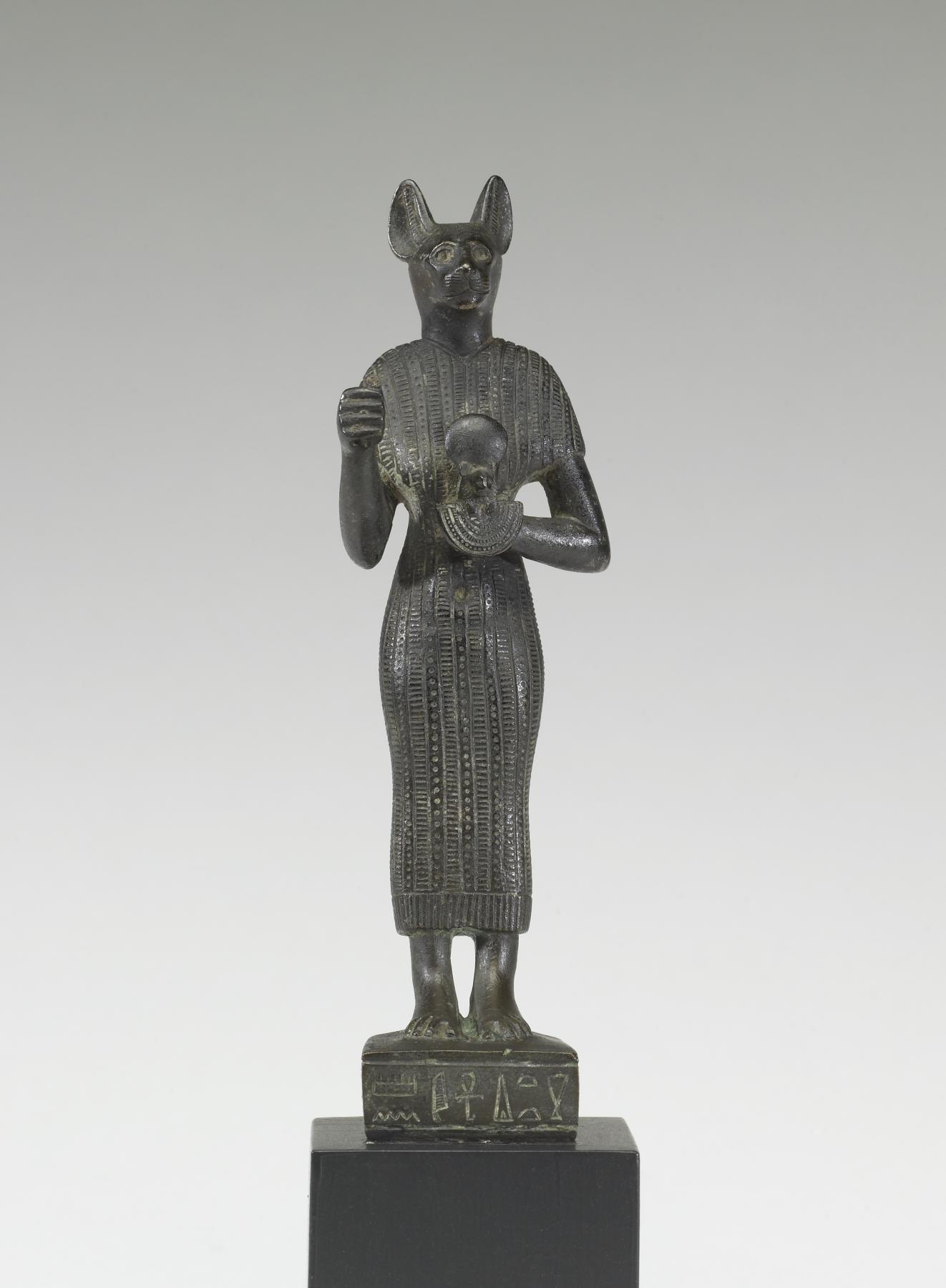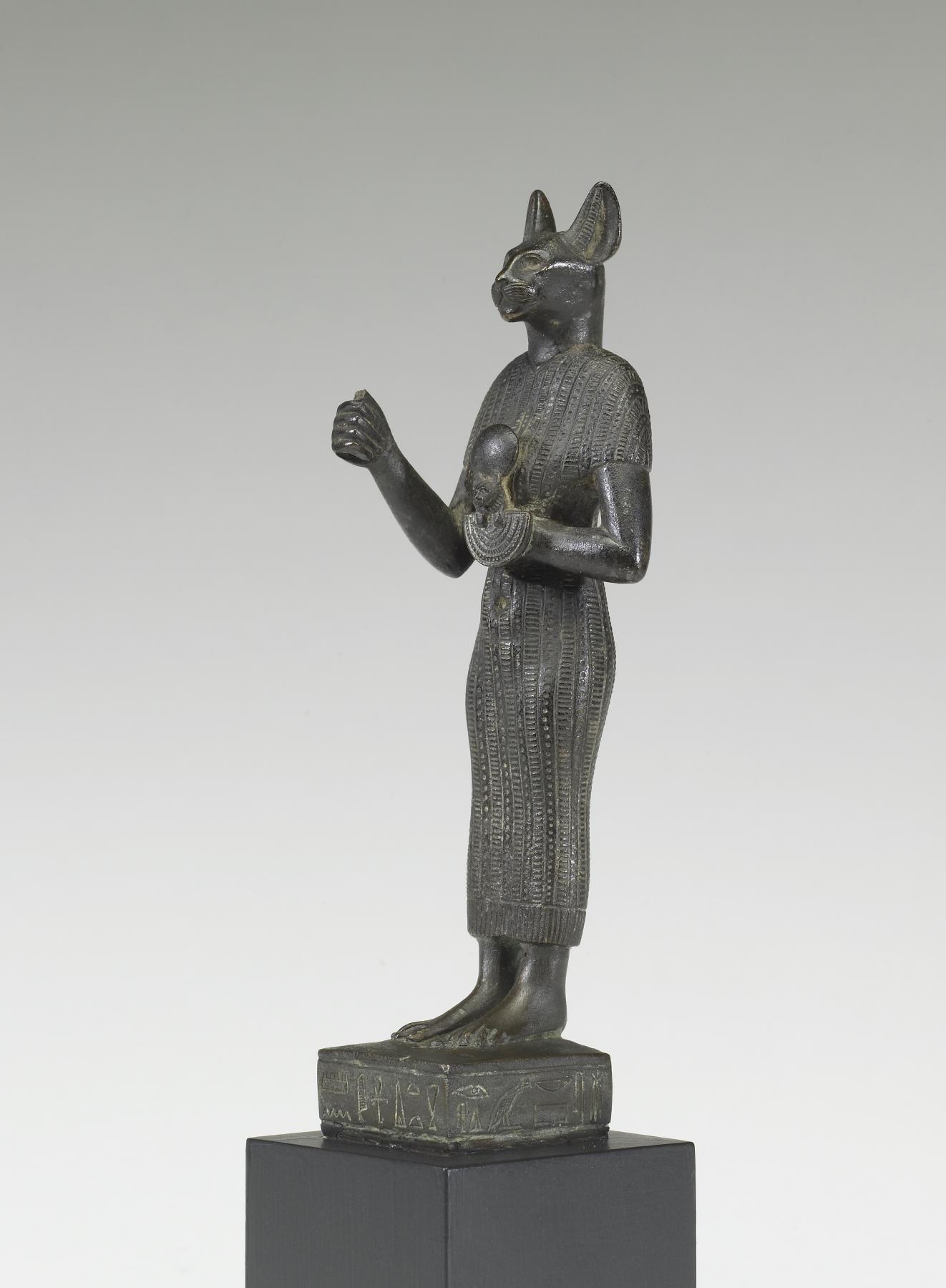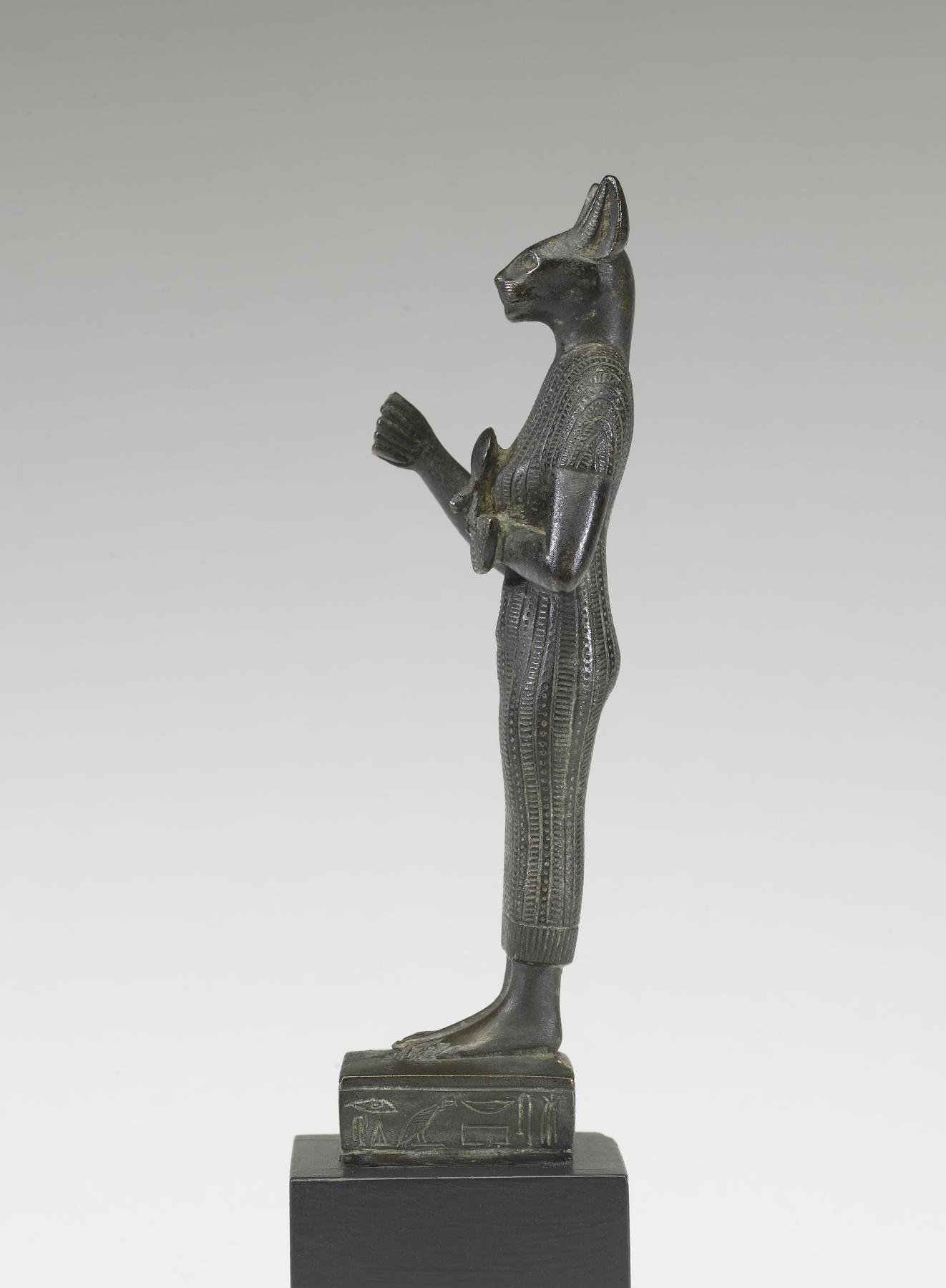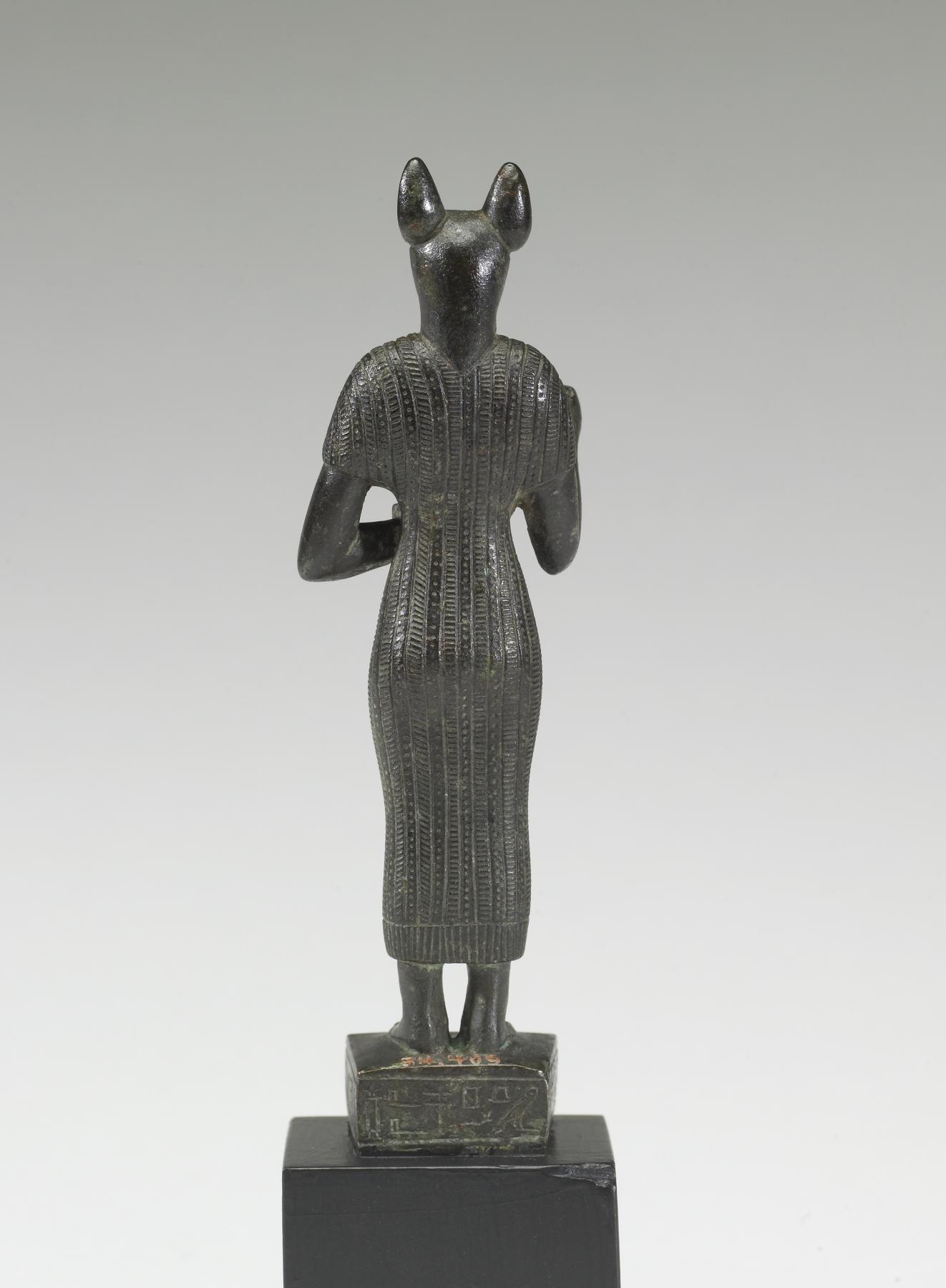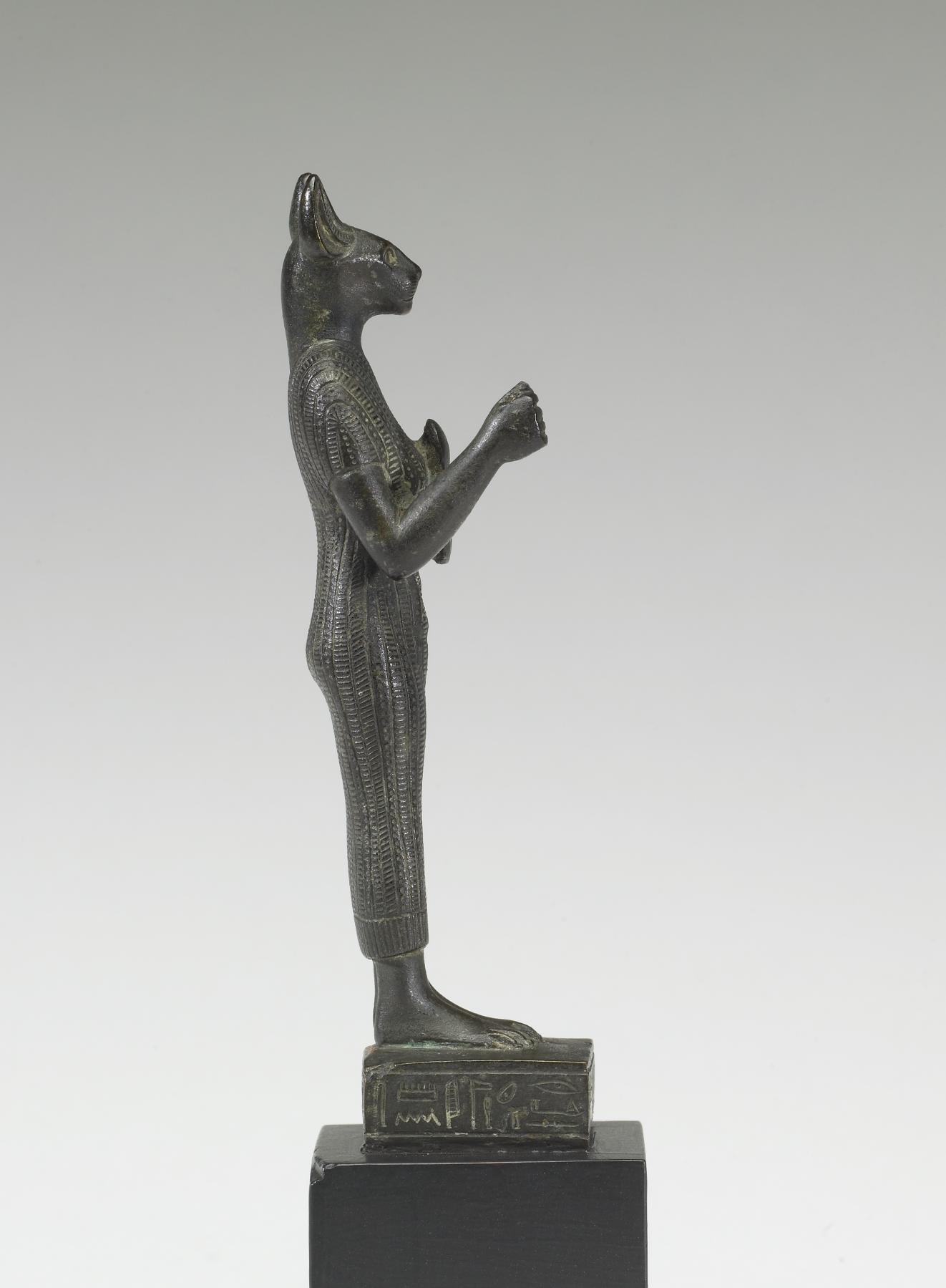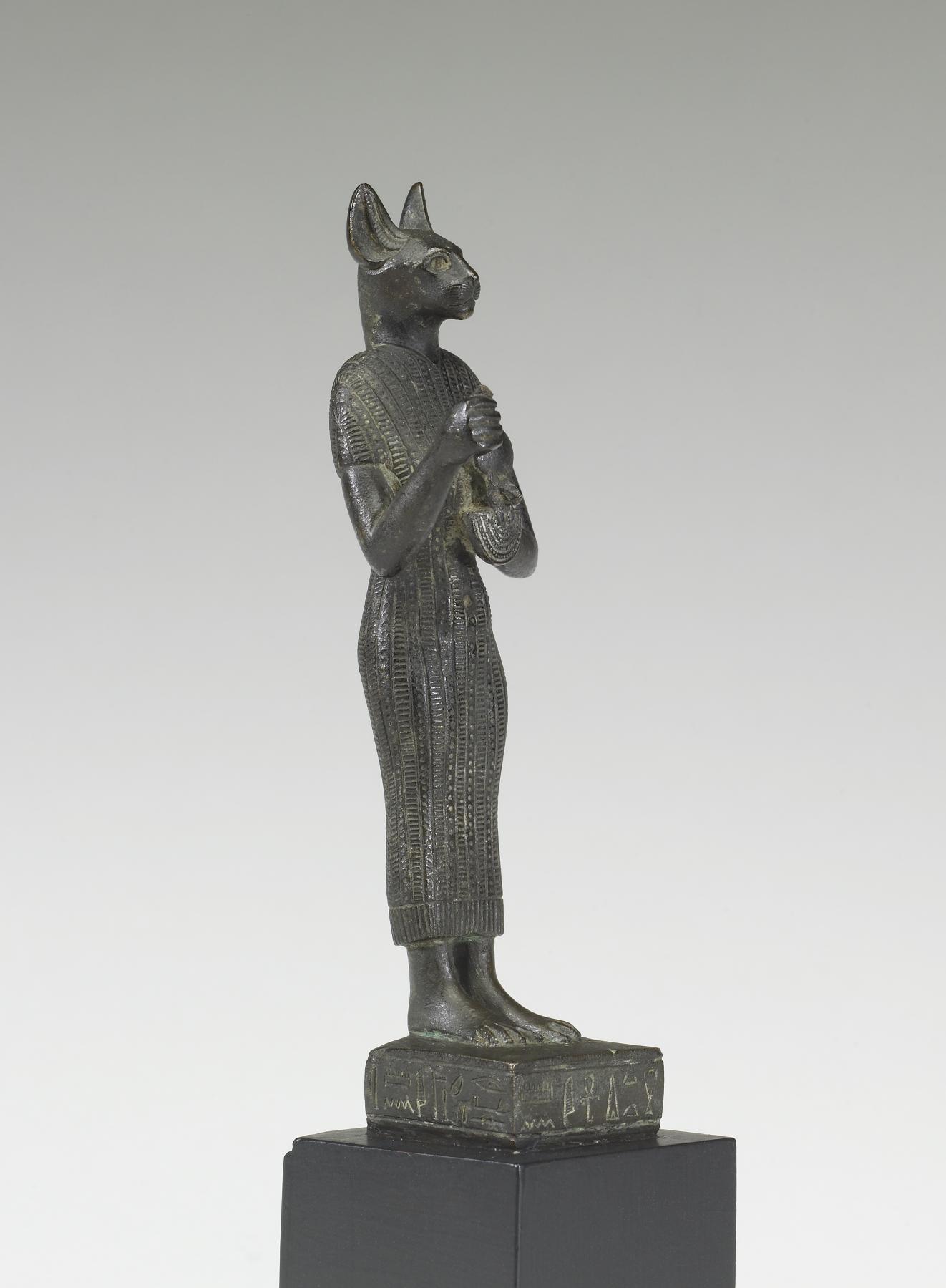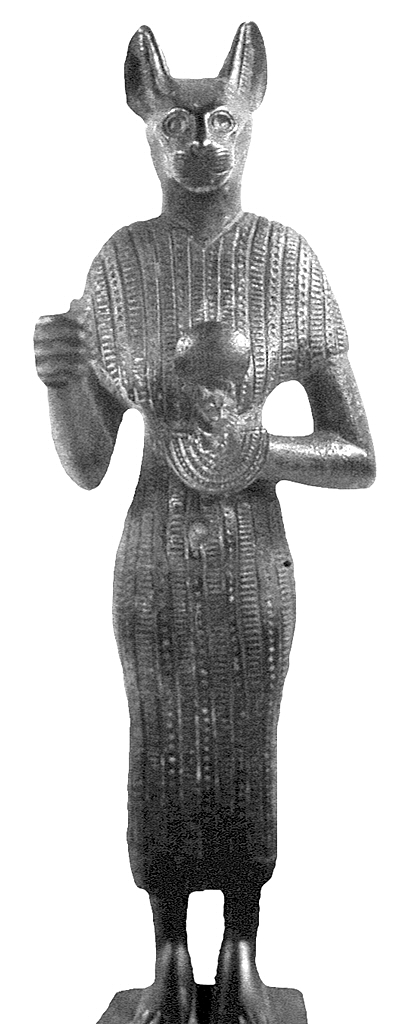Bastet Holding an Aegis
(Ancient Egypt and Nubia )
The ancient Egyptians donated figures of their gods for use in temple rituals; smaller images served as amulets to ensure divine protection. Goddesses in particular were viewed as protective deities. From earliest times, Egyptian venerated a wide circle of feline-headed female deities, such as Sakhmet, Tefnut, Wadjet, and Bastet.
This statuette of a standing Bastet has an usekh-collar with a lioness head in her hand as a protective symbol. The inscription on the base names the donor of the figure.Inscription
Provenance
Provenance (from the French provenir, 'to come from/forth') is the chronology of the ownership, custody, or location of a historical object.
[From Mitrahina]; Dikran Kelekian, New York and Paris [date and mode of acquisition unknown]; Henry Walters, Baltimore, 1911, by purchase; Walters Art Museum, 1931, by bequest.
Exhibitions
| 2013-2014 | Egypt’s Mysterious Book of the Faiyum. The Walters Art Museum, Baltimore. |
| 2006-2007 | Daily Magic in Ancient Egypt. The Walters Art Museum, Baltimore. |
| 2003-2004 | Secret Signs: Egyptian Writing. The Walters Art Museum, Baltimore. |
| 1964 | Thou Shalt Have No Other Gods Before Me. The Jewish Museum, New York. |
Conservation
| Date | Description | Narrative |
|---|---|---|
| Examination | examined for condition | |
| 9/17/1959 | Treatment | cleaned |
| 12/22/1960 | Treatment | examined for exhibition; cleaned |
| 2/12/1964 | Examination | examined for loan |
| 1/14/1965 | Treatment | cleaned |
| 12/1/1975 | Treatment | stabilized; loss compensation; other |
| 6/27/2003 | Treatment | cleaned; other |
Geographies
Egypt (Place of Origin)
Measurements
H: 4 13/16 x W: 1 7/16 x D: 1 1/4 in. (12.3 x 3.6 x 3.2 cm); H with base: 6 9/16 x W: 1 5/8 x D: 1 5/8 in. (16.6 x 4.1 x 4.2 cm)
Credit Line
Acquired by Henry Walters, 1911
Location in Museum
Not on view
Accession Number
In libraries, galleries, museums, and archives, an accession number is a unique identifier assigned to each object in the collection.
In libraries, galleries, museums, and archives, an accession number is a unique identifier assigned to each object in the collection.
54.409

